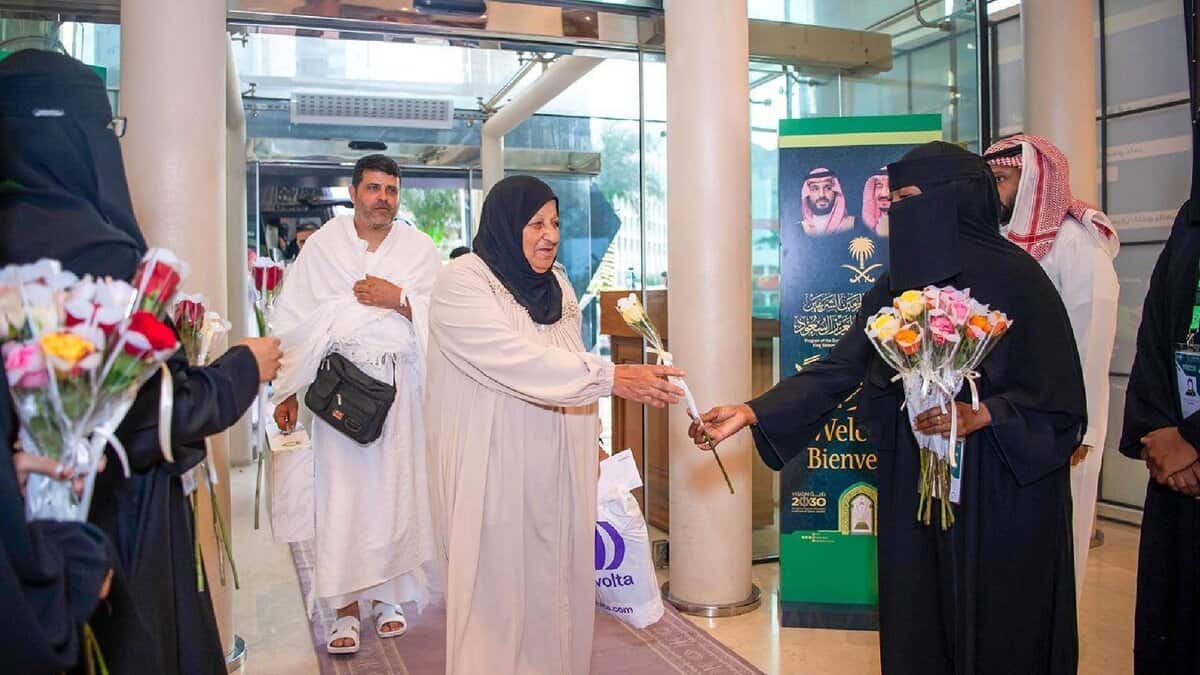
As Haj 1446 AH–2025 approaches, Saudi authorities have unveiled a comprehensive suite of services and technological advancements to ensure the comfort, safety, and well-being of millions of pilgrims arriving from across the globe.
Haj this year will commence on Wednesday, June 4. The Day of Arafah will be observed on Thursday, June 5, while Eid Al Adha will fall on Friday, June 6.
World’s largest cooling system activated at Grand Mosque
The General Authority for the Care of the Affairs of the Grand Mosque and the Prophet’s Mosque has activated the world’s largest mosque cooling system, boasting a total capacity of 155,000 refrigeration tons. The system is designed to maintain indoor temperatures between 22 and 24 degrees Celsius, creating a spiritually uplifting and comfortable environment.
Two main cooling stations—Shamiya (120,000 tons) and Ajyad (35,000 tons)—serve the expansive areas of the Grand Mosque. Advanced air purification technologies remove up to 95 percent of airborne impurities, ensuring optimal air quality.
Regular maintenance, efficient resource management, and rigorous safety checks are conducted to sustain performance throughout the high-demand Haj season. These efforts reflect the Kingdom’s commitment to enhancing the pilgrim experience, particularly in challenging weather conditions.
For first time in Haj history, drones and helicopters to deliver medical supplies
For the first time in Haj history, the Kingdom of Saudi Arabia (KSA) has deployed drones and helicopters to deliver medical supplies, revolutionising healthcare logistics for mass gatherings
Health Minister Fahad AlJalajel confirmed the initiative, launched in collaboration with the National Unified Procurement Company (Nupco). Drones now deliver urgent supplies to six major healthcare centres—three in Arafat and three in Mina—cutting delivery times from one hour to just five minutes.
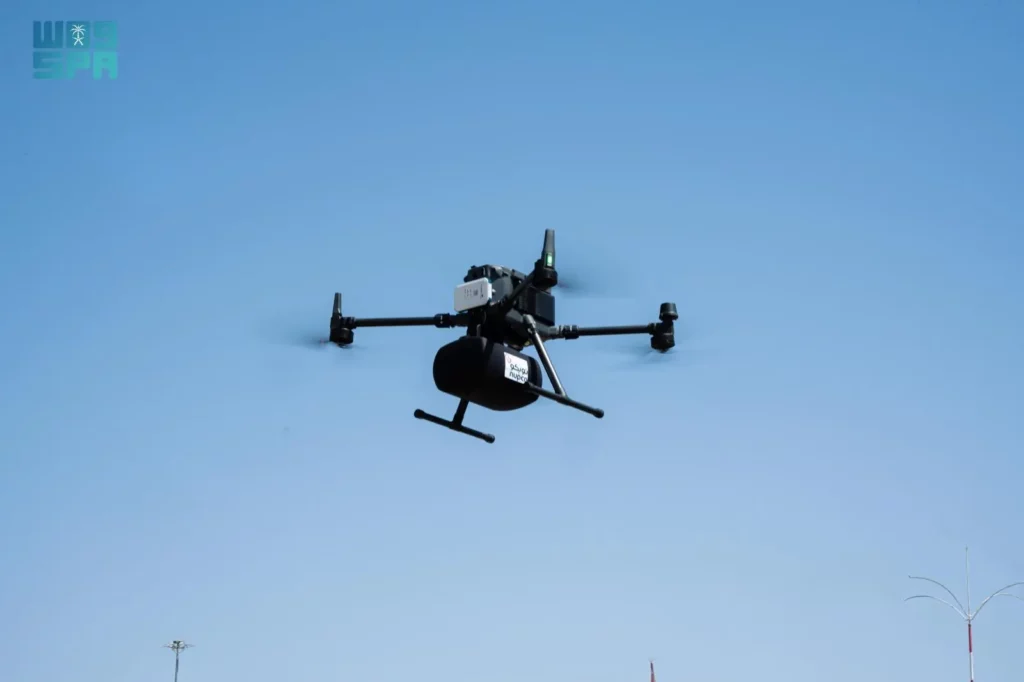
Helicopters support health facilities equipped with helipads in congested areas, bypassing traffic to ensure rapid emergency response.
This milestone initiative underlines the Kingdom’s ongoing efforts to pioneer smart healthcare in crowded settings.
AI-powered ‘Falcon’ drone for firefighting and rescue
Adding another layer to emergency preparedness, the General Directorate of Civil Defense has unveiled the AI-enhanced “Falcon” drone for the Haj season. This high-tech drone is designed for firefighting and rescue operations in challenging environments, including high-rise buildings and densely crowded areas.
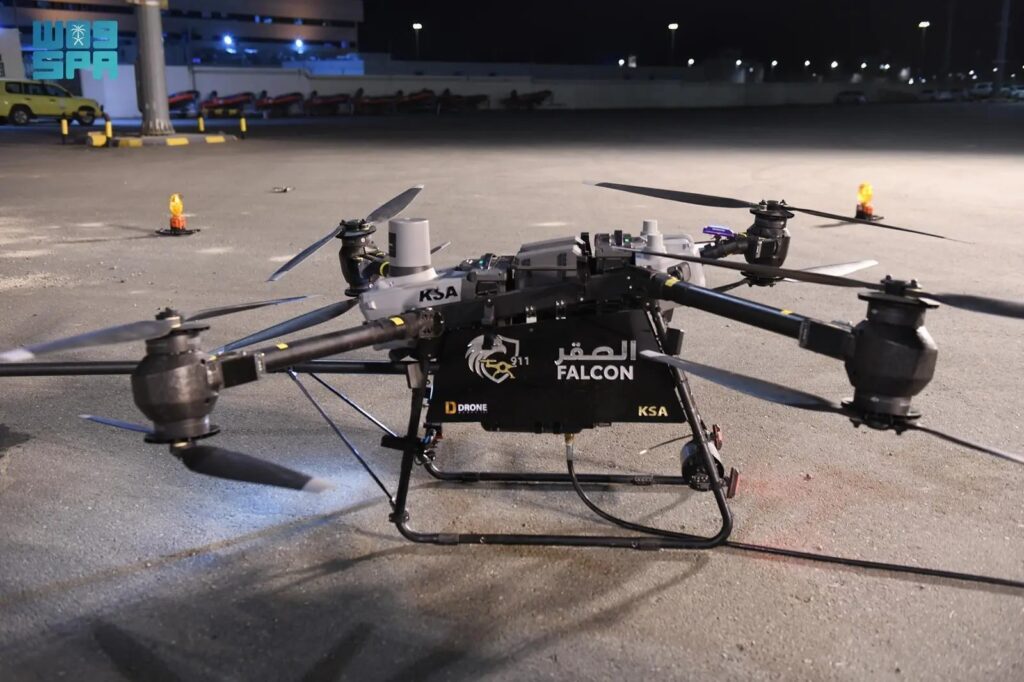
The Falcon can operate for up to 12 hours and carry around 40 kilograms of payload. It features thermal imaging, live-streaming capabilities, and a multipurpose firefighting system—all linked to the central command and control centre for real-time coordination.
With the ability to respond rapidly while minimising risks to human personnel, the Falcon drone offers critical support in scenarios involving hazardous materials, industrial sites, or forested regions, marking a significant step forward in Haj safety infrastructure.
Kidana launches heat stress mitigation at Jabal Al-Rahmah
In a parallel initiative, Kidana Development Company, under the Royal Commission for Makkah City and the Holy Sites, has completed a major heat stress mitigation project at Jabal Al-Rahmah.
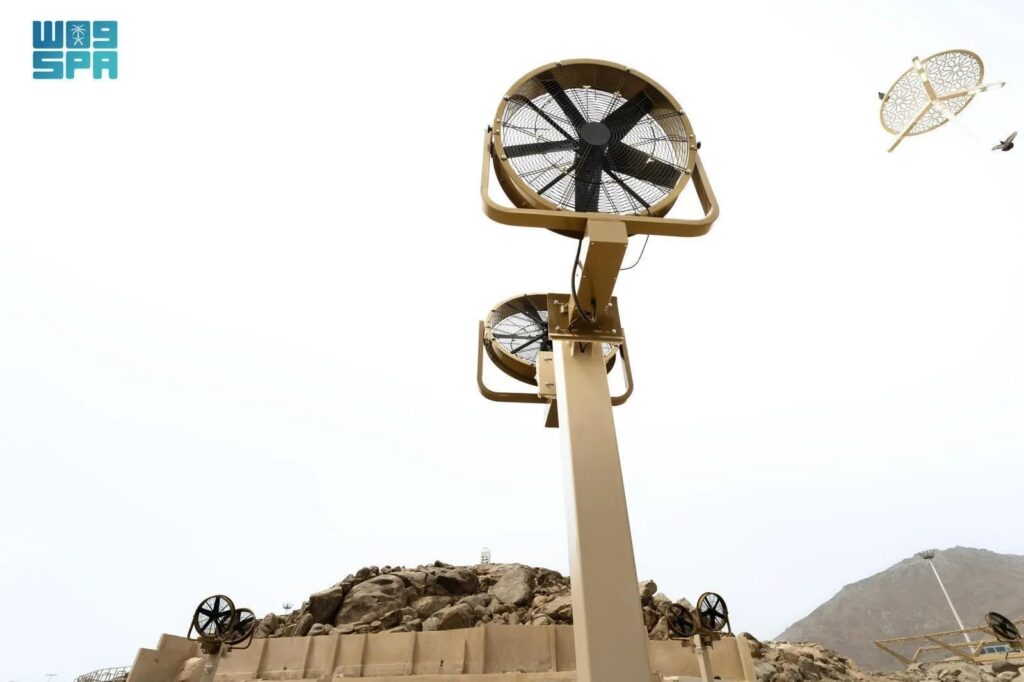
Spanning 196,000 square metres, the project features 785 square metres of shading canopies and 129 mist fans, as well as shaded walkways, green areas, rest zones, and emergency stations. The initiative aligns with national efforts to protect pilgrims during intense heat conditions.
Namira Mosque courtyards get shading, greenery upgrades
In a complementary effort, Kidana is also transforming the courtyards of Namira Mosque in Arafat. Covering 85,000 square metres, the project includes:
- Planting of 2,000 trees
- Installation of 320 shading canopies
- 350 misting fans
- Full infrastructure for water and electricity networks
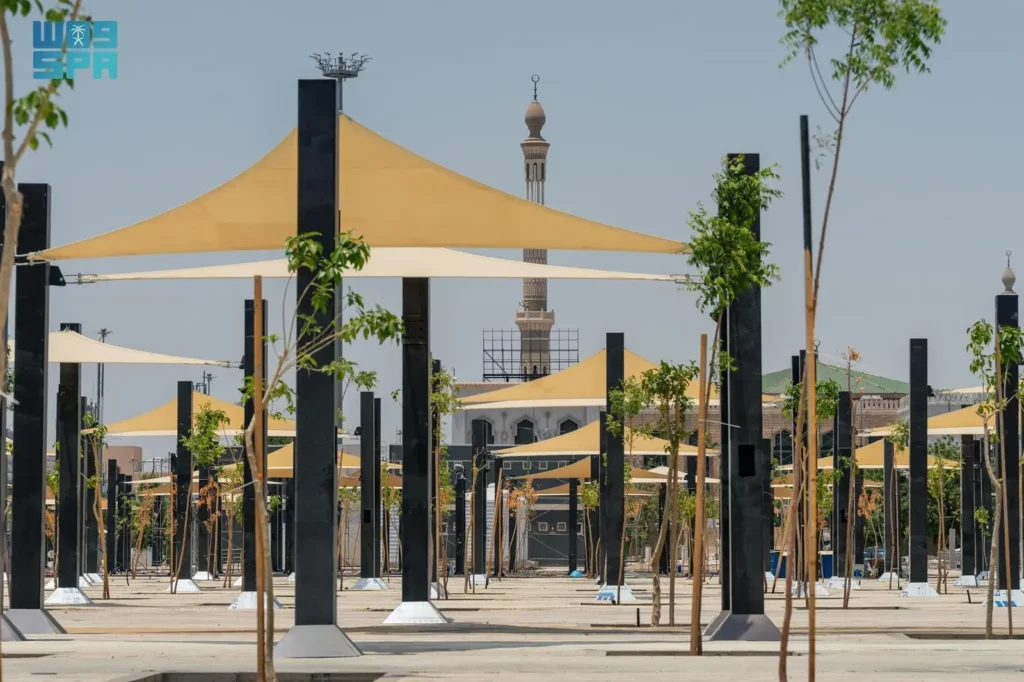
Kidana has also completed the planting of 20,000 trees across 290,000 square metres as part of the Green Holy Sites initiative, in line with the broader Saudi Green Initiative to combat heat and improve air quality at pilgrimage sites.
Weather monitoring stations enhance forecast accuracy
The National Centre of Meteorology (NCM) has achieved full atmospheric coverage of the holy sites with the deployment of 18 weather stations for Haj 2025. These include:
- 16 automatic stations in Makkah and the holy sites
- 2 manned stations in Mina and Arafat
- 1,920 hourly bulletins to support operations
Madinah is covered by six automated stations and one airport observatory. Radar systems in Makkah, Jeddah, Taif, and Yanbu offer additional support.
A media centre in Mina broadcasts multilingual weather updates and safety messages using AI and advanced imaging to keep pilgrims and authorities informed.
Over 4,700 scouts mobilised to serve pilgrims
More than 4,700 Saudi scouts and rovers are participating in this year’s Haj service camps, organised by the Saudi Arabian Scouts Association. Distributed across 14 sub-camps in Makkah, Mina, and Arafat, the scouts will assist pilgrims with field guidance, crowd management, and other essential services.
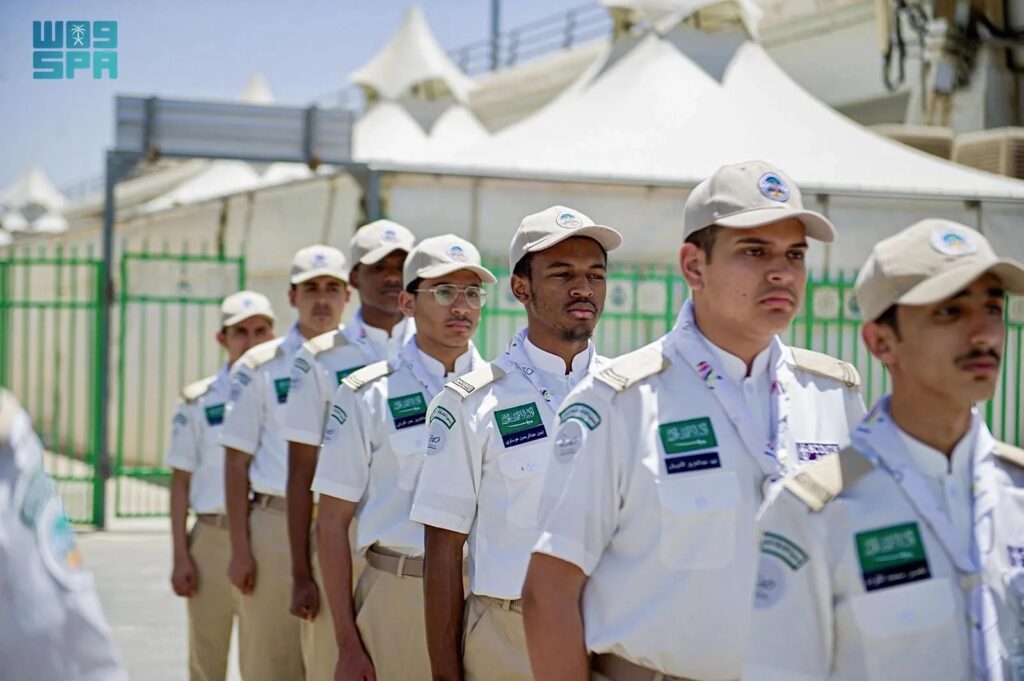
The camps are fully equipped with accommodation, medical facilities, and logistical support to help volunteers fulfil their duties effectively, showcasing the Kingdom’s enduring culture of service and volunteerism.
SRCA strengthens emergency services
The Saudi Red Crescent Authority (SRCA) has bolstered its emergency response capabilities for Haj 2025 through multiple strategic measures:
- Medical Dispatch Centre: Over 200 medical personnel, including doctors, dispatchers, and operators, have been deployed to handle emergency calls via the 997 hotline and various mobile applications. AI-powered real-time translation tools are now in place to improve communication with non-Arabic-speaking pilgrims.

- Medical Supplies: SRCA has prepared more than 7,500 boxes of medical supplies and stocked over 14.5 million medical items and medications at key locations in Makkah, Mina, and Muzdalifah. These are designed to address both routine and critical emergencies.
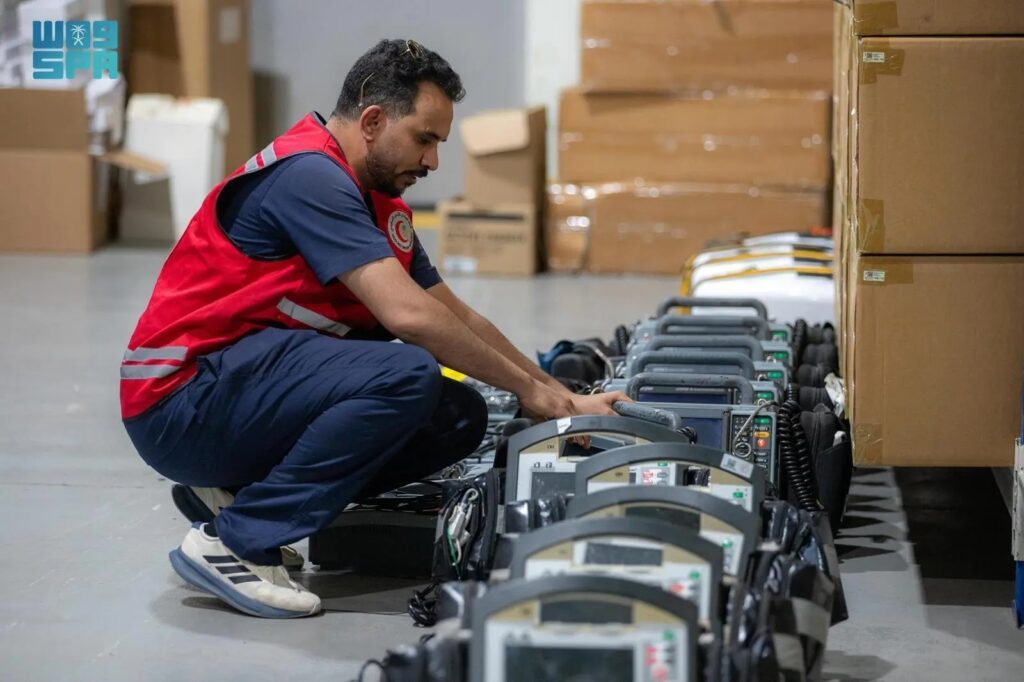
- Ambulance Units: More than 120 ambulance units and 100 support vehicles are operational across Makkah, including 30 stationed at the Grand Mosque. These are staffed by over 160 emergency medical technicians and supported by 16 medical golf carts to access densely populated areas.
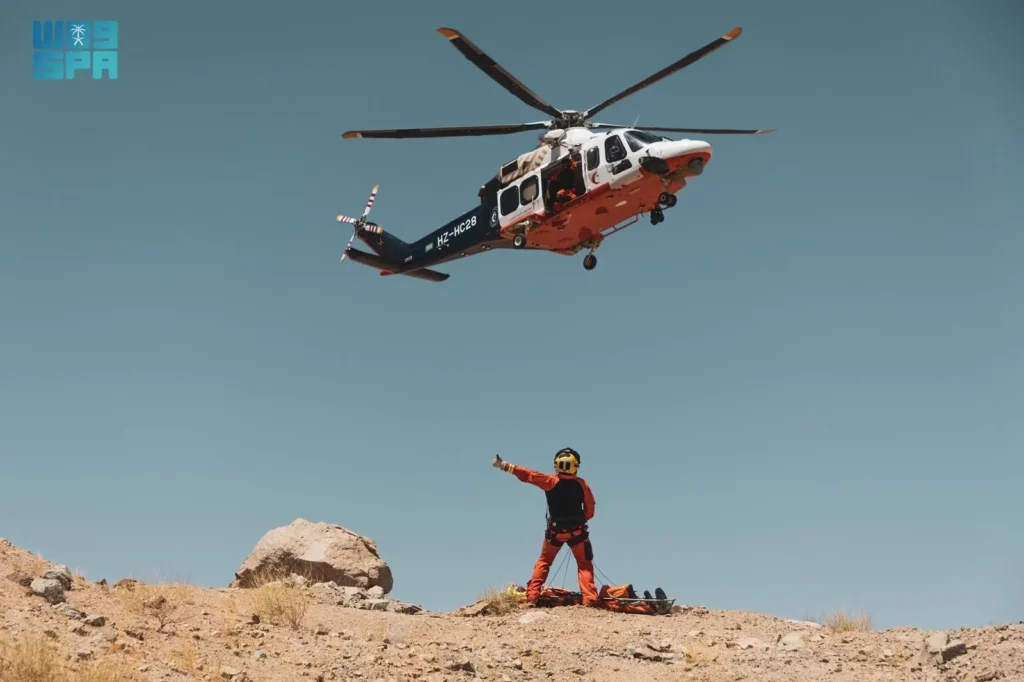
Additionally, more than 550 male and female volunteers are providing 24/7 emergency medical support, further reinforcing the Kingdom’s readiness for any eventuality during the pilgrimage.
Together, these efforts showcase Saudi Arabia’s full-spectrum commitment to a safe, healthy, and spiritually fulfilling Haj experience.



